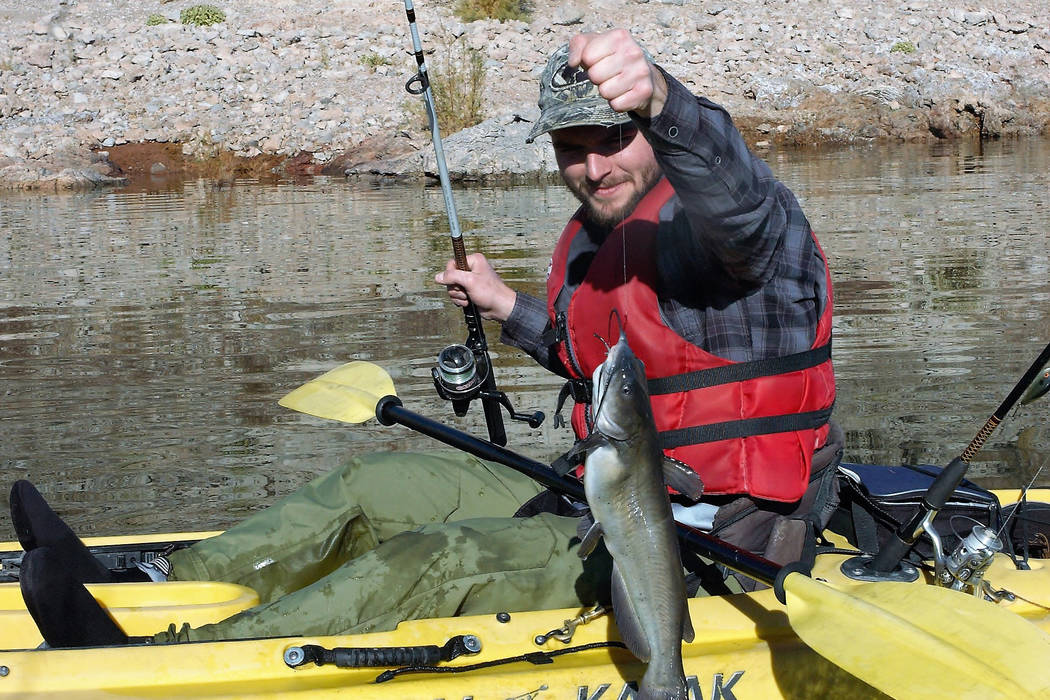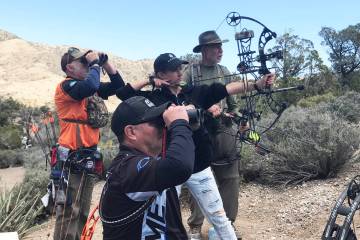Remembering ‘The Wild Man,’ who lived life to the fullest
Father’s Day weekend brought an array of sales on fishing rod and reel combos at our local outdoor retailers. While perusing the ads that Saturday morning, I came across a picture of a pretty bait-casting combo that would match two spinning rods already in my arsenal and just had to have one.
By late that afternoon, I was giving one of those black, red and gray beauties a test drive at Lake Mead. And that’s when my youngest son, Hyrum, interrupted my research with an early Father’s Day phone call.
Some of you will remember Hyrum as the young boy whose outdoor exploits were documented in this column as he grew from boy to man and eventually left home to pursue life’s adventures. Hyrum has always done things his own way, and that earned him the nickname “The Wild Man.”
While on a Boy Scout campout one summer, Hyrum decided to give his survival training a trial run and took no food on the overnight trip. He was going to prove to himself and the other boys that he could “live off the land.”
As the other scouts ate their hearty camp meals, Hyrum hunted something to put on his rather lonely plate. After a while, hunger got the best of him and he grabbed a scrawny lizard. It provided little more than a bite or two, but with the lizard’s tail wriggling down his throat, Hyrum proved his point. Even if it left him feeling a little queasy when the chewing was done.
On another occasion, Hyrum and I went striper fishing near Pyramid Island. He was about 10 and had a little trouble sitting still and staying quiet. So, I set out to demonstrate the benefits of doing just that by catching a mess of stripers.
My plan backfired, however, when he grew tired of waiting for a bite and suddenly jumped into the lake with a splash and all the delicacy of a large boulder.
Then, just as I started to deliver my previously prepared speech on the proper way to remain quiet while fishing, the tip on Hyrum’s fishing rod dipped hard toward the water and his drag began to sing. With all the confidence of a veteran angler, Hyrum scrambled out of the water and reeled in his fish.
No to be deterred, I went back to sitting quietly while Hyrum cast in his line and then performed a near perfect cannonball into the water. Almost immediately, his rod bent over and Hyrum scrambled out of the water to reel in yet another fish.
This pattern continued until Hyrum had about a half dozen stripers on the stringer and I grew tired of rebaiting his hook. So much for being quiet.
Then there was the time that Hyrum brought home a live rattlesnake and put it in a box in the house. That didn’t make his mother happy, and my phone began to ring.
“Do you know what your son did?” she exclaimed when I answered.
She shared the story, fully expecting me to fix things.
“Hyrum,” I said, “you have two choices. You can put the snake back where you got it, or you can eat it, but you aren’t going to keep it in the house.”
A few minutes later, Hyrum asked his mother for some seasoning. When she looked outside, the snake was on the grill.
During that Father’s Day phone call, Hyrum and I discussed the differences between a bait-caster and a spinning outfit. I told him that I had only recently developed an appreciation for the bait-casting reel for certain applications.
“I definitely think it is an acquired taste, but once you start getting the hang of it, you will want more than one,” I said.
Hyrum shared a few Idaho fishing stories and then had to go. We expressed our love for each other, and he said goodbye with a Happy Father’s Day wish. What a great way to start my Father’s Day, I thought, and went back to serious fishing.
Little did I know that conversation would be our last. Late in the evening on Father’s Day, “The Wild Man” died in a motorcycle accident on a quiet country road in central Idaho where he went to become a cowboy like his Grandpa Tex. I’m so glad he interrupted my research and that we had the opportunity to fish together one last time.
Freelance writer Doug Nielsen is a conservation educator for the Nevada Department of Wildlife. His “In the Outdoors” column, published Thursday in the Las Vegas Review-Journal, is not affiliated with or endorsed by the NDOW. Any opinions are his own. Find him on Facebook at @dougwritesoutdoors. He can be reached at intheoutdoorslv@gmail.com.

















